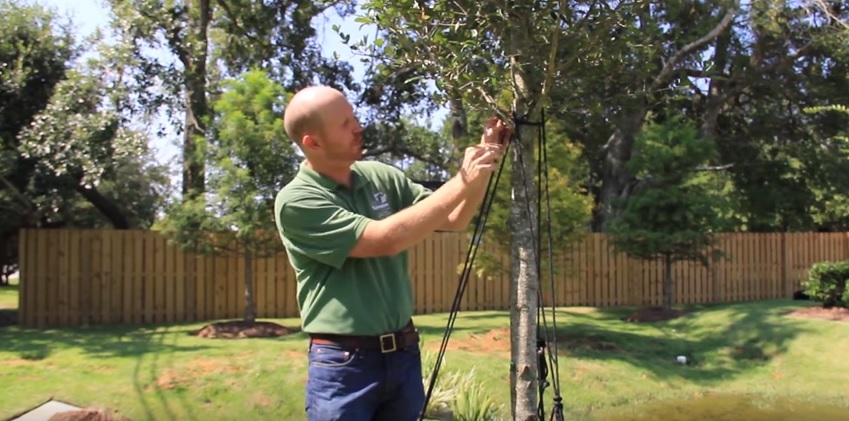Staking and guying trees provide wind protection and allow trees to grow straight. Though not always necessary, they are useful in certain circumstances such as areas with strong prevailing winds and top heavy trees with small root balls. Without proper support, trees can shift back and forth in their planting holes, severing smaller roots and lengthening the establishment period.
Properly installed staking systems typically consist of three stakes placed evenly around the tree. Two of these stakes should be placed in the direction of the prevailing wind. Stakes are driven underground to provide resistance to wind and are connected to guy wires, or straps, that attach to the lower branches of the tree. Turnbuckles on the straps allow for easy adjustment of strap tension. Straps should not be extremely tight and should allow the tree to move by two to three inches before catching, allowing the tree to move naturally in the wind. If the straps are too tight, the tree may not develop proper taper and can lean or break during storms.
It is important to note that staking and guying should only be used when necessary because improperly placed straps can damage trees. Wide, smooth polymer straps should be used instead of coarse ropes. These straps ensure that a minimal amount of pressure is applied to the point of attachment, preventing damage to the tree’s cambium or causing girdling. Stakes and straps should be left on the tree for up to six months in warmer climates and up to one year in cooler climates. Stake systems should be inspected at least once during that perios to ensure the straps have not become embedded in the tree’s bark.
Watch the video Staking and Guying Landscape Trees to learn more. This video is part of a series, Trees for Energy Conservation, developed by the Southern Regional Extension Forestry and Virginia Tech Cooperative Extension with funding provided by a National Urban and Community Forestry Advisory Council grant.
Written by: Connor McDonald, Southern Regional Extension Forestry

